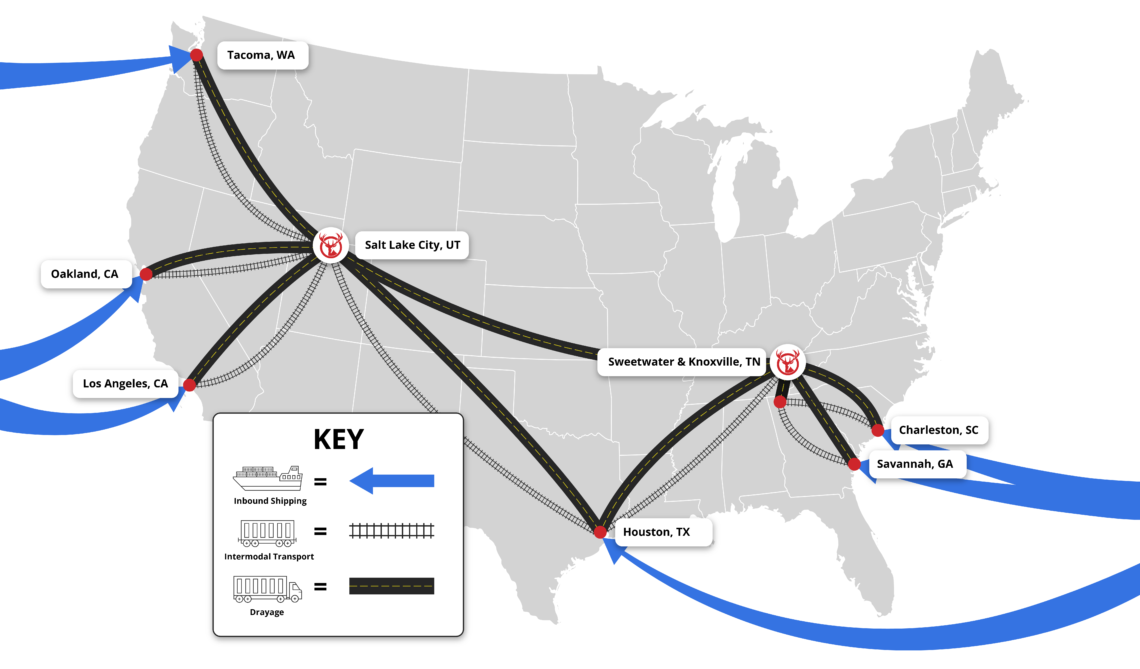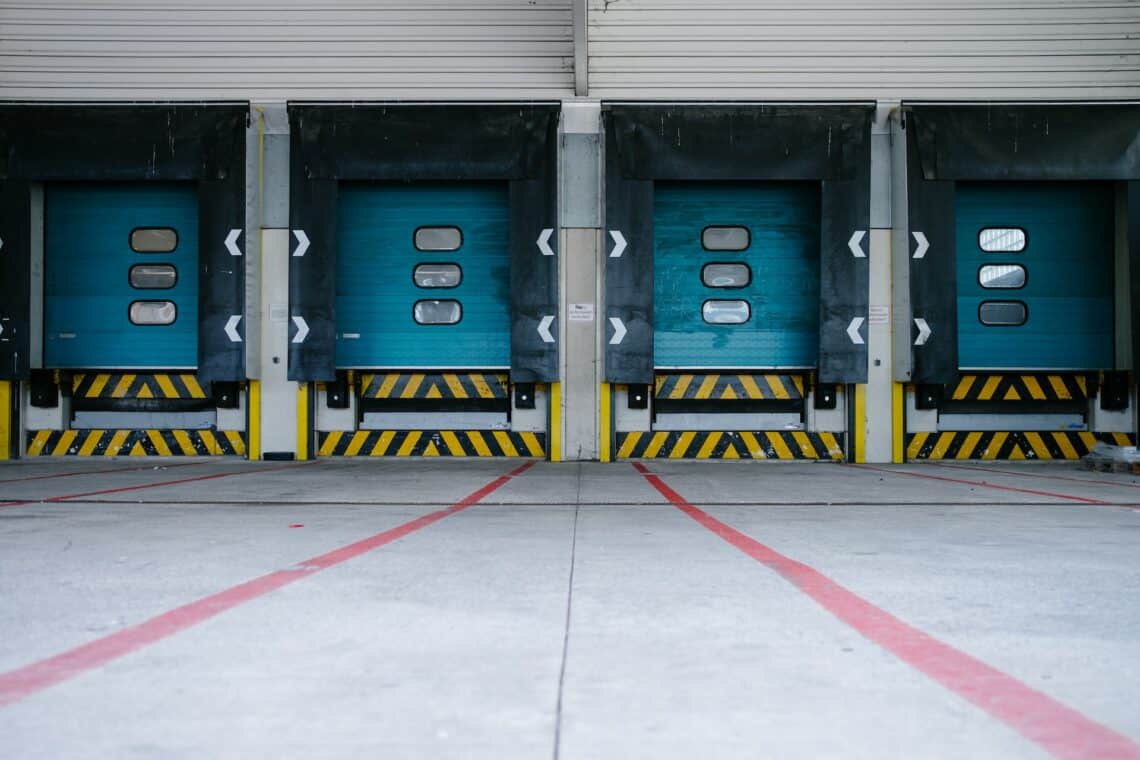The old adage “don’t put all your eggs in one basket” is sage advice for supply chains. Supply chain diversification can shield you against many threats, from disruptions to your supply chain to cost increases and customer frustrations.
Resilience remains the goal of modern supply chains, and adding links has proven to be a direct way to build that strength. However, diversification can feel like an ambiguous term people toss around. Let’s ground it and discuss what benefits companies can see from having multiple partners and redundancies.

General benefits of supply chain diversification
Supply chain diversification involves securing relationships with multiple product sources and carriers so that you’re not relying on just a few partners. You want to remove single points of failure by creating backups you can shift to quickly. The goal is that when any partner struggles or fails, your business can keep moving.
From our standpoint, diversification is often most important in the supply of products, domestic carriers, and fulfillment locations. Diversifying and adding multiple options here can yield benefits, including:
- Reduced risk: When you have multiple suppliers, you’re less vulnerable if one supplier has an issue.
- Increased flexibility: You can respond quickly to changes in customer demand if you have a diversified supply chain.
- Improved customer service: Multiple suppliers can help avoid stockouts and backorders.
- Cost savings: Diversifying your supply chain can lead to cost savings because you can take advantage of economies of scale.
- Greater resiliency: A diversified supply chain is more resilient to disruptions than a single-source supply chain. That’s true whether it’s a large-scale issue like COVID or a short-term concern like the Suez Canal blockage.

Diversifying supply chain partners builds resilience
A resilient supply chain can respond to operational disruptions quickly by employing contingency plans based on partners and forecasts or models. The more scenarios you plan for and protect against — from sourcing goods through last-mile final delivery — the stronger your supply chain.
Think of supply chain diversification as building a business resistant to outside threats to recover quickly when unforeseen events arise.
The fastest way to get to that level of resilience is to remove areas where you rely on a single location or supplier. So, having a 3PL with multiple warehouses to store goods and ship inventory builds resilience. Adopting multiple regional and national carriers limits your risk when any one carrier has a capacity issue. If you produce your own goods, having two raw material suppliers limits the harm a supply chain issue like Russia’s invasion can do to your network.

Aside from threats, multiple partners build resilience by allowing you to negotiate more favorable terms. You can shift business to companies that are more affordable, offer better customer support, or protect your margins. It’s security wrapped up in bargaining power.
At the same time, you’re building strength that can become a competitive advantage for your customers and partners.

A note on risk

Diversification is an effort that can take months to plan and execute. You’ll be navigating turbulent waters because of the potential to move business away from an existing partner. Not every company is open to these discussions, but that’s important to learn because you want partners that prioritize your growth.
The risk of upsetting the apple cart is often worth it because more significant risks are associated with having a single supplier. First, if that supplier experiences a problem or goes out of business, you will be left without a source for your needed products or services.
If you dropship some products, this event can shut down your entire operation at any given moment. If you’re more of a traditional eCommerce seller, supplier disruptions can lead to significant delays or disruptions in your operations. Is that worth not employing supply chain diversification?
Being heavily reliant on a single supplier means they could start charging higher prices for raw materials, goods, or services. Those partners may also cut back on the production or capacity you depend on to satisfy customers. These threats increase costs for your company or put revenue at risk by increasing the chance of stockouts or order refunds. If you only use one carrier and they pull your shipment capacity during peak season, that’s an immediate threat to the viability of your business.

5 options for supply chain diversification
You’ve got multiple ways to achieve supply chain diversification. Here are a few of the most direct routes:
- Use multiple suppliers. Sourcing from different suppliers provides flexibility to use the one offering the best terms at any given moment. It also helps mitigate the risk of any supplier going out of business or experiencing problems.
- Use multiple carriers. Mixing national and regional carriers can help to reduce shipping costs and provide the capacity to move orders when you experience sudden growth. Supply chain diversification also reduces the risk of disruptions when a carrier experiences uncertainty or labor disputes.
- Use multiple fulfillment locations. A single 3PL partner like Red Stag can introduce flexibility and resilience into your supply chain by offering multiple fulfillment locations. For us, we can improve delivery times and reduce costs by shipping from the warehouse closest to each customer’s location. Plus, you avoid potential regional or severe weather risks that would stop fulfillment altogether if you only had one warehouse.
- Have redundant systems in place. Consider putting backup systems in place so you can continue operating even if one system goes down. For example, you might have a backup power generator in case of a power outage. We use multiple internet connections at every location to ensure orders aren’t missed. It’s also why we scan SKUs multiple times during pick and pack. You can’t have too many checks when profitability is on the line.
- Diversify your customer base. This helps ensure you are not overly reliant on any single customer or group of customers. The pandemic taught many companies this lesson; some have seen long-term benefits. Shifting production based on need, targeting new customers with existing profits, and even switching between B2B and B2C marketing has helped companies thrive in the new state of the supply chain.

Keep diversification as a top goal
Supply chain diversification is a critical tool for companies in today’s global economy. By diversifying their supply chains, companies can minimize risks, become more efficient, and improve their bottom line. In an increasingly uncertain world, supply chain diversification is the cure for many common concerns. And best of all, Red Stag Fulfillment is here to make that easy. Our multiple warehouse locations, carriers, and best practices are designed with resiliency in mind.











